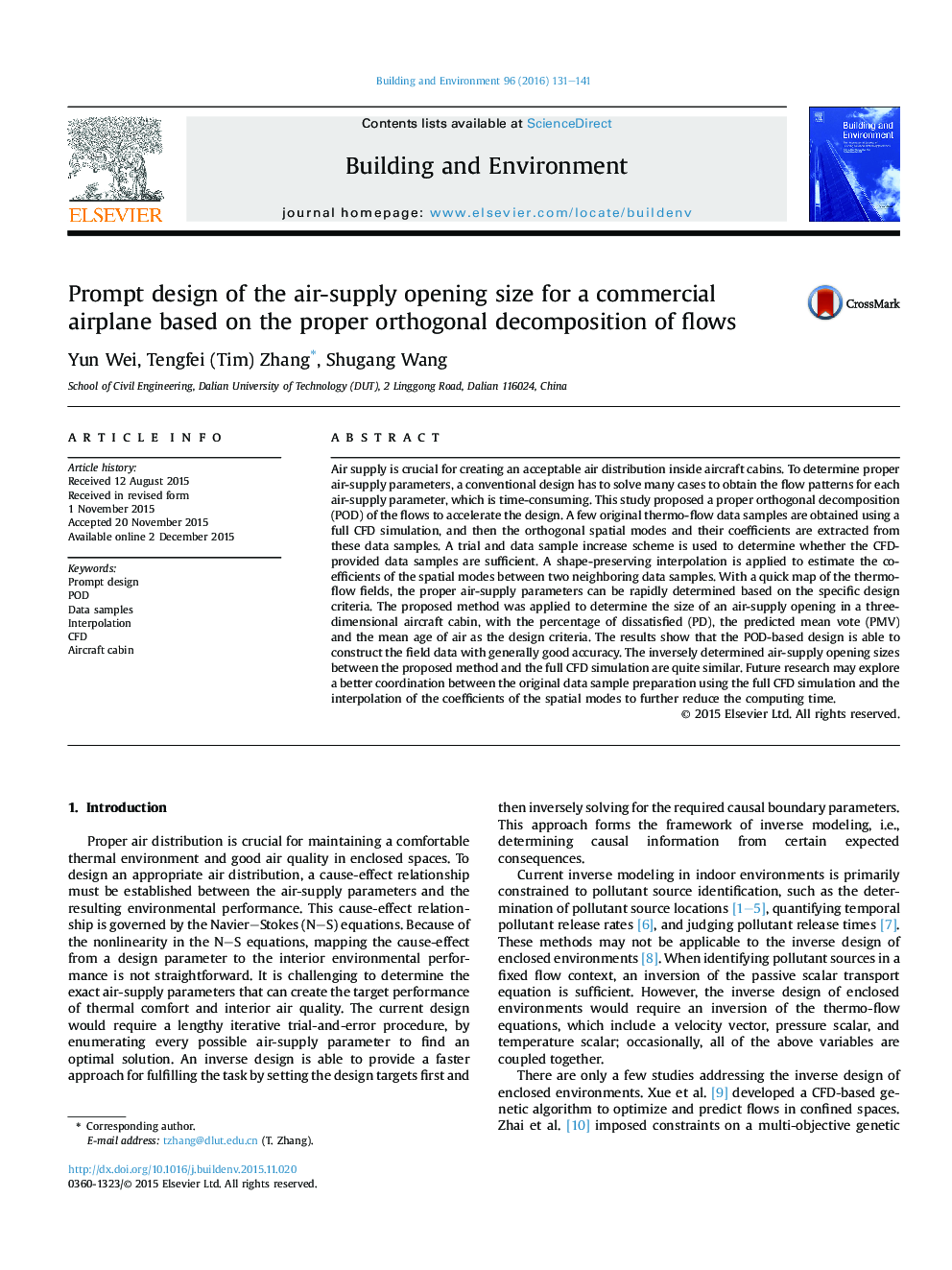| Article ID | Journal | Published Year | Pages | File Type |
|---|---|---|---|---|
| 247734 | Building and Environment | 2016 | 11 Pages |
•Inverse design of air-supply conditions for an ideal environment.•Quick map from air-supply conditions to thermo-flow fields using POD.•Coordination of a full CFD simulation and POD interpolation.
Air supply is crucial for creating an acceptable air distribution inside aircraft cabins. To determine proper air-supply parameters, a conventional design has to solve many cases to obtain the flow patterns for each air-supply parameter, which is time-consuming. This study proposed a proper orthogonal decomposition (POD) of the flows to accelerate the design. A few original thermo-flow data samples are obtained using a full CFD simulation, and then the orthogonal spatial modes and their coefficients are extracted from these data samples. A trial and data sample increase scheme is used to determine whether the CFD-provided data samples are sufficient. A shape-preserving interpolation is applied to estimate the coefficients of the spatial modes between two neighboring data samples. With a quick map of the thermo-flow fields, the proper air-supply parameters can be rapidly determined based on the specific design criteria. The proposed method was applied to determine the size of an air-supply opening in a three-dimensional aircraft cabin, with the percentage of dissatisfied (PD), the predicted mean vote (PMV) and the mean age of air as the design criteria. The results show that the POD-based design is able to construct the field data with generally good accuracy. The inversely determined air-supply opening sizes between the proposed method and the full CFD simulation are quite similar. Future research may explore a better coordination between the original data sample preparation using the full CFD simulation and the interpolation of the coefficients of the spatial modes to further reduce the computing time.
